Description and history of the Third Generation 1982-1992 Camaros:
The "Third Generation" of the Chevrolet Camaro F-car was introduced in 1982 and had a production run which lasted an entire decade to 1992. The "Third Gen Camaro" went through various trim, facia, suspension and wheel changes as well as engine options. All were of a steel unibody, hatchback design. Various models included the Berlinetta, RS (Rally Sport), Z28 and IROC. If it wasn't for it's ubiquity, it would have been more of a head turner, with it's aerodynamic, Italian supercar inspired lines. It's sister car, the Pontiac Firebird / Trans Am shared the same platform and components with it's own unique body panels and styling.
All Third Generation Camaros came with a pushrod-actuated valves, a cast iron block engine, front disk brakes and rear wheel drive. The front "subframe" of the older second generation Camaro was now part of the integrated unibody in the third generation Camaro. Rear leaf springs were dropped in favor of coil springs. The rear was controlled by a long torque arm, a sway bar, a panhard rod, two trailing links, coil springs and shocks. The front suspension used a MacPherson strut design with a lower A-arm and coil spring. The V-8 horsepower grew from a 145 hp 305 cid (5.0 L) in 1982 to a 270 hp 350 cid (5.7 L) by 1992. It is the ease of engine swaps which makes the Third Generation Camaro superior to the fourth generation for the backyard hot rodder. The third gen Camaro engine is removed by removing the hood and radiator and lifting the engine up and over the engine compartment while the fourth gen swap requires lowering the engine from a raised vehicle.
The Third Generation Camaros were manufactured in Norwood Ohio ('82-'87) and in Van Nuys California ('82-'92) and resulted in a production run of over 800,000 cars.
The six generations of Camaros are as follows:
-
First Generation Camaro
(1967-1970)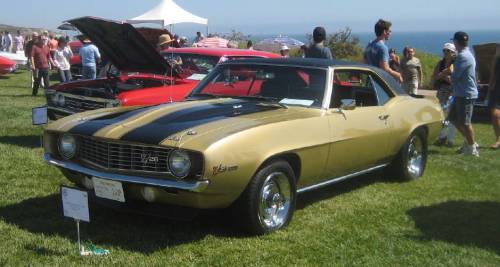
Second Generation Camaro
(1970-1981)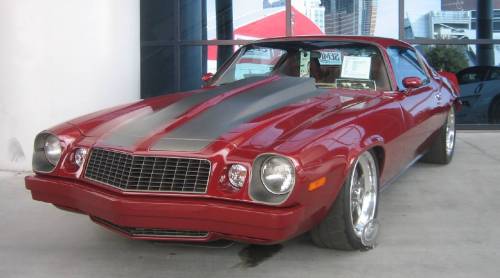
Third Generation Camaro
(1982-1992)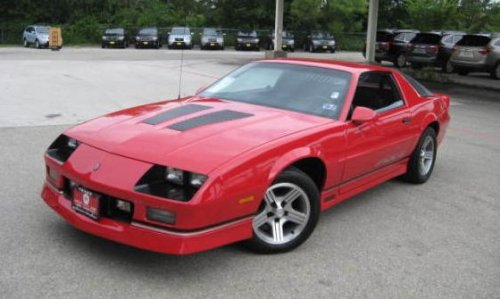
Fourth Generation Camaro
(1993-2002)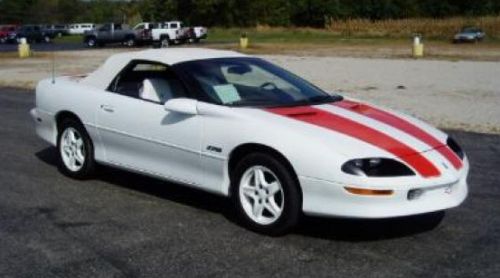
Fifth Generation Camaro
(2010 - 2015)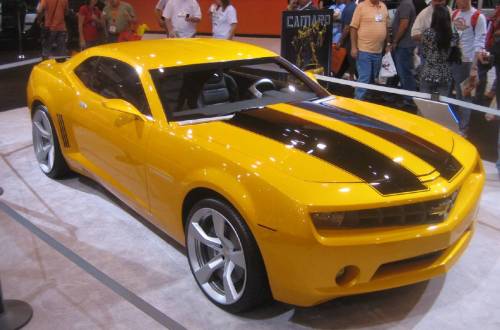
Sixth Generation Camaro
(2016 - ?)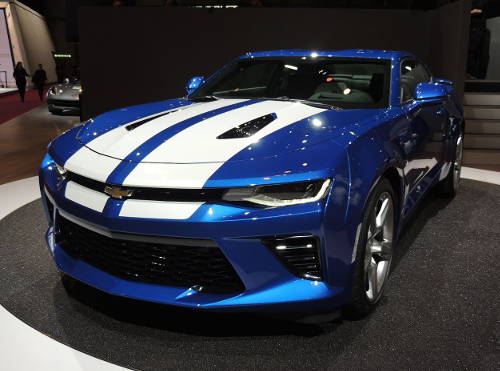
Third-Gen History:
1982 Chevrolet Camaro:
-
The Third Generation Camaro was introduced and chosen to be the Indy 500 pace car. It was available with a 4 (1982 only), 6 and 8 (305 cid) cylinder cast iron engine with a 4 speed Borg Warner manual transmission or 3 speed (and later 4 speed) automatic.
The Z28 package included a aluminum 15x7 inch wheels, a SMC (Sheet Molded Compound)
hood, ground effects / lower body valances which ran the full circumference of the vehicle and a rear spoiler.
The Camaro became Motor Trend magazine's Car of the Year for 1982.
It was also the Indianapolis 500, 1982 pace car. Six thousand pace car replicas were sold.
Three models were available:- Camaro Sport Coupe:
Engines:- 2.5L 151 cid LQ9 4 cyl
- 2.8L 173 LC1 V-6
- 5.0L 305 LG4 V-8
- Camaro Berlinetta:
Engines:- 2.8L LC1 V-6
- 5.0L 305 LG4 V-8
- Camaro Z28:
Engines:- 5.0L 305 LG4 V-8 4bbl 145 hp
- 5.0L 305 LU5 twin TBI "Cross Fire Injection" 165 hp
Available only with the automatic transmission.
The Chevy TV commercial for the 1982 Z28 - Camaro Sport Coupe:
1983 Chevrolet Camaro:
- GM introduces a higher horsepower engine (5.0L L69 4bbl 190 horse High-Output "HO") [3223 sold], a 3.73 rear axle ration and a 5 speed manual transmission or the 4 speed 700R4 automatic.
1984 Chevrolet Camaro:
- A hydraulic clutch is introduced on all manual transmission vehicles. An electronic Berlinetta dash was introduced including a bar-graph tachometer and digital speedometer.
1985 Chevrolet Camaro:
- New rounded (and better looking) front and rear bumpers were introduced. The lower body ground valances were also rounded and more prominent. The 16x8 inch aluminum rims, P245/50ZR-16 Z Rated Goodyear Gatorback tires, IROC suspension and markings got the Camaro noticed one again. A beefier rear end unit was also introduced. I can personally testify to the wimpyness of the older rear end unit. A high horsepower (215hp) TPI (Tuned Port Injection) V8 was introduced but only available with an automatic. It was the final year for the 4 cyl engine.
1986 Chevrolet Camaro:
- Who could forget the introduction of the center high mounted stop light in the rear hatchback glass. A special edition (no A/C) IROC-Z with a L98 5.7 L 350 TPI engine was sold, but not to the general public. Only 1000 with this engine were believed to be sold.
1987 Chevrolet Camaro:
- The middle tail light moves to the spoiler. The V-6 RS is introduced as well as the Z28 and IROC-Z convertible and J65 four wheel disc brakes. Engine upgrades to the V8 included roller lifters and improved sealing center bolt valve covers. The 350 TPI B2L received a KC4 engine oil cooler as well. The Borg-Warner HD 7.75 inch, 9 bolt rear end was available from GMs Australian unit and employed tapered roller bearings and a cone posi clutch. The rear brakes were upgraded to the J65 disk brake unit. The rear brake light was moved to the rear spoiler, the speedometer range was increased to 145 mph (IROC-Z and Z28), a convertible was optional.
1988 Chevrolet Camaro:
- The Z28 and IROC-Z become one car, the IROC Z28. The Z28 ground effects were now standard on all Camaros. The serpentine engine accessories belt and TPI were introduced.
1989 Chevrolet Camaro:
- Rear seats now have shoulder belts and the electronically coded ignition keys put an end to the rampant loss of Camaro's to theft. The rear wheel disk brake (J65) rotor diameter is increased and the rear aluminum PBR calipers are introduced. The 1LE option is introduced and includes and aluminum drive shaft (JG1), dual cats (N10), aluminum spare (N64), front 1LE spindles (part #'s 18016737 / 18016738) and Girlock or PBR Australian built HD front dual piston aluminum calipers (part #'s 10132827 / 10132828) with larger 11.86 inch rotors. The base Camaro model is called the RS. The highest horsepower option is the TPI 350 with 240 hp.
1990 Chevrolet Camaro:
- The IROC name is dropped mid year. Driver side air bag is standard.
1991 / 1992 Chevrolet Camaro:
-
The lower body valances and rear bumper is re-styled. The side lower body valances now have a fake air scoop in front of each wheel. The middle tail light moves one again to the inside of the hatchback glass.
The B4C "Special Service" package was offered to law enforcement agencies (600 sold).
Engines:- 350 TP (245 hp @4400rpm and 345 ft·lbs @3200 rpm)
- 305 TPI (235 hp @4200 rpm and 300 ft·lb @3200 rpm)
Third gen Camaro production numbers:
Year |
Total Production |
Z28/IROC | Z28/IROC Convertible |
Berlinetta | RS | RS Convertible |
|---|---|---|---|---|---|---|
| 1982 | 189,747 | 64,882 6,360 Pace Car |
39,774 | |||
| 1983 | 154,831 | 62,650 | 27,925 | |||
| 1984 | 261,591 | 100,899 | 33,400 | |||
| 1985 | 180,018 | 68,403 | 21,177 | |||
| 1986 | 192,219 | 88,132 | 49,585 | |||
| 1987 | 137,760 | 52,863 Z28 3,452 IROC |
744 | |||
| 1988 | 96,275 | 24,050 4 1LE |
3,761 | |||
| 1989 | 110,739 | 20,067 111 1LE |
3,940 | 83,487 | 3,245 | |
| 1990 | 34,896 | 4,213 62 1LE |
1,294 | 28,750 | 729 | |
| 1991 | 100,838 | 12,452 478 1LE 592 B4C |
3,203 | 79,854 | 5,329 | |
| 1992 | 70,007 | 5,197 705 1LE 589 B4C |
1,254 | 60,994 | 2,562 |

